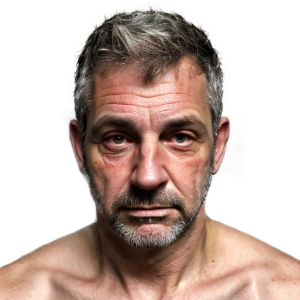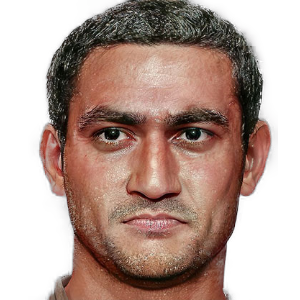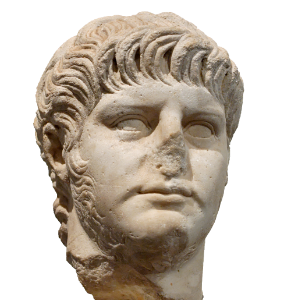Brothers active in Roma
Mithraic monuments of Roma
Mitreo di Santa Prisca
The Mithraeum of Santa Prisca houses remarkable frescoes showing the initiates in procession.
CIMRM 476
Mitreo di San Clemente
The Mithraeum under the Basilica of San Clemente made part of a notable Roman house.
CIMRM 338
Mitreo Barberini
The Barberini Mithraeum was discovered in 1936 in the garden of the Palazzo Barberini, owned by Conte A. Savorgnan di Brazza.
CIMRM 389
Mitreo del Circo Massimo
The Mithraeum of the Circus Maximus was discovered in 1931 during work carried out to create a storage area for the scenes and costumes of the Opera House within the Museums of Rome building.
CIMRM 434
Mithraeum of the Baths of Caracalla
The Mitreo delle terme di Caracalla is one of the largest temples dedicated to Mithras ever found in Rome.
CIMRM 457
Mitreo di Santo Stefano Rotondo
The Mitreo dei Castra Peregrinorum was discovered under the church of Santo Stefano Rotondo in Rome.
Mitreo del Campidoglio «lo perso»
This temple of Mithras on the north side of the Capitoline Hill in Rome no longer exists.
CIMRM 414
Mitreo dell’Esquilino
In a house from the time of Constantine, a Lararium was found with a statue of Isis-Fortuna. The Mithraeum was a door next to it, on a lower room.
CIMRM 356
Mitreo d'Orazio Muti
This Mithraic temple, now disappeared, is known thanks to the numerous remains recorded since 1594 in the 'Memorie di varie antichità trovate in diversi luoghi della città di Roma'.
Aion of Orazio Muti
This monument has been identified from ’Memorie di varie antichità trovate in diversi luoghi della città di Roma’, a book by Flaminio Vacca of 1594.
CIMRM 382
Procession Fresco from Santa Prisca
Figures in procession, each representing a different grade of Mithraic initiation, labeled with their respective titles.
CIMRM 480
Aion of Villa Albani
White marble statue of Lion-head god of time, formerly in the Villa Albani, nowadays in the Musei Vaticani.
CIMRM 545
Tauroctony of Ottaviano Zeno
In this relief of Mithras as bull slayer, recorded in 1562 in the collection of A. Magarozzi, Cautes and Cautopates have been replaced by trees still bearing the torches.
CIMRM 335
Tauroctony of the Villa Borghese
This relief of Mithras slaying the bull was erected in Piazza del Campidoglio, moved to Villa Borghese and is now in the Louvre Museum.
CIMRM 415
Torchbearer of Porta Portese
This is one of the two torchbearers, probably Cautes, transformed into Paris, now in the British Museum.
CIMRM 506
Two-sided relief of Fiano Romano
The marble shows Mithras slaying the bull, on one side, and Sol and Mithras feasting on a bull skin, on the other.
CIMRM 641
Petrogeny of Santo Stefano Rotondo
The sculpture of Mithras rock-birth from Santo Stefano Rotondo bears an inscription of Aurelius Bassinus, curator of the cult.
Major fresco of the Mitreo Barberini
The votive fresco from the Mithraeum Barberini displays several scenes from Mithras’s myth.
CIMRM 390
Tauroctony of Circo Massimo
This remarkable marble relief from the end of the 3rd century was discovered in the most remote room of the Mithraeum in the Circo Massimo.
CIMRM 435
Tauroctonia del Cortile del Belvedere
White marble relief depicting Mithras slaying the bull, dedicated by Atimetus.
CIMRM 546
Tauroctony found under the Palazzo Montecitorio (CIMRM 430)
This relief was found under the Palazzo Montecitorio, in Rome, and bought by the Liebighaus at Frankfort.
CIMRM 430
Altar of Vettius Agrorius Praetextatus
The marble altar mentions Vettius Agrorius Praetextatus as Pater Sacrorum and Patrum and his wife Aconia Fabia Paulina.
CIMRM 420
Aion from Villa Barberini
This lion-headed marble was found on the ruins of the Alban Villa of Domitianus.
CIMRM 326
Submission scene from Barberini
This scene of the main fresco of the Mithraeum Barberini seems to depict part of the initiation into the Mithraic Mysteries.
Tauroctony relief exposed at the Hermitage Museum
The relief marble of Mithras sacrifying the bull, exposed on the Hermitage Museum comes from Rome.
CIMRM 603
Tauroctony exhibited at the Cincinnati Art Museum
In the tauroctonic relief on display at the Cincinnati Art Museum, Mithras slaughters the bull over a rocky background.
Second Petrogeny of Santo Stefano Rotondo
The second statue of Mithras rock-birth was found in the Mitreo di Santo Stefano Rotondo shows a childish Mitras emerging from the rock.
Tauroctony of Santo Stefano Rotondo
The relief of Mithras killing the bull of Stefano Rotodon preserves part of his polycromy and depicts two unusual figures: Hesperus and an owl.
Zeus Brontoon sanctuary near Villa dei Quintili
Mithras and other oriental gods were worshipped in the shrine of Zeus near the Villa of the Quintilians in Rome.
CIMRM 634
Tauroctony from Vermaseren's private collection
Maarten Vermaseren acquired this rosso antico marble of Mithras slaying the bull in 1961.
Mitreo della Piazza Dante
The Mithraeum located in Piazza Dante in Rome was discovered in 1874 along with a series of monuments dedicated by a Pater named Primus.
CIMRM 349
Taurcotony statue of the Esquiline Hill
Except for the serpent, the sculpture of the taurcotony found on the Esquiline Hill lacks the usual animals that accompany Mithras in sacrifice.
CIMRM 352
Mithras petrogenitus of the Esquilino
The relief of Mithras being born from the rock of the Esquiline shows the young god naked, as usual, with a torch and a dagger in his hands.
CIMRM 353
Tauroctony relief of the Esquiline
The relief of Mithras slaying the bull found on the Esquiline Hill includes two additional scenes with Mithras and two other figures.
CIMRM 350
Tarouctony of the Palazzo San Marco
This sculpture of Mithras slaying the bull was bequeathed to the Republic of Venice in 1793 by Ambassador Girolamo Zulian.
CIMRM 584
Mithraic Sol of Piazza Dante
The relief of Sol was found during the construction of Piazza Dante in Rome in 1874.
CIMRM 354
Head of Sol / Helios intarsio from Sant Prisca
The intarsium of Sol found in the Mithraeum of Santa Prisca is composed of several varieties of marble.
Petrogeny of San Clemente
Mithras birth from the knees upwards emerging from a rock and wearing as usual a Phrygian cap.
CIMRM 344
Inscription by Proficentius, Rome
This marble slab bears an inception be the Pater Proficentius to whom Mithras has suggested to build and devote a temple.
CIMRM 423
Mithraeum under the Basilica of S. Lorenzo
In 1938 this Mithraeum was found 3.45 mtrs under the Basilica of S. Lorenzo in Damaso, in a cellar near the Sacrament's Chapel.
CIMRM 421
Altar from the Mitreo sotto la Basilica di San Lorenzo
This cylindrical marble altar was dedicated by the same Pater Proficentius as the slab, both monuments found in the Mithraeum beneath the Basilica of San Lorenzo.
CIMRM 422
Mitreo all'Arco di San Lazzaro
Three mithraic monuments were found in 1931, suggesting that a mithraeum probably existed in the area.
CIMRM 472
Stele of the Arch of San Lazzaro
This stele found at the foot of the Aventine bears an inscription of Kastos father and son, and mentions several syndexioi who shared the same temple.
CIMRM 473
Altar dedicated by Pater Patrum Augentius
This altar, now lost, mentions that the Pater Patrum passed on the attributes of the sacred Corax to his son.
CIMRM 403
Mitreo di S. Silvestro in Capite
This Mithraic temple, also known as the Mithraeum of the Olympii, dates to the 3rd century and was rediscovered in 15th-century Rome, but it has not been preserved.
CIMRM 399
Inscription of Olympus to his grandfather
This monument is the only one still available from the disappeared Mithraeum in Piazza S. Silvestro in Capite.
CIMRM 406
Inscription of the Olympius for a Leo
The inscription explains the transmission of the fourth Mithraic degree through the Paters of the Mitraeum of San Silvestro.
CIMRM 400
Inscription of Kastos father and son
Second Mithraic monument dedicated by the Kastos family, found not far from the Arco di S. Lazzaro, in Rome.
CIMRM 474
Inscription of Septimius Archelaus
This marble plaque was made by a Pater and priest Lucius Septimius Archelaus of Mithras for him, his wife and his freedmen and freedwomen.
CIMRM 511
Marble slab with inscription of Aelius Urbanus
The Mithraic fellow P. Aelius Urbanus mentions that he built the sacred area of the Mithraeum Circo Massimo.
CIMRM 449
Altar of Fructus and Myro
This marble monument was dedicated in Rome by the slave Fructus and his son Myro.
CIMRM 518
Marble slab with inscription from Mitreo Barberini
The inscription mentions the name of the donor, Yperanthes, of Persian origin.
CIMRM 391
Altar from Mitreo di San Clemente
The altar of the Mithraeum of San Clemente bears the Tauroctony on the front, Cautes and Cautopates on the right and left sides and a serpent on the back.
CIMRM 339
Altars to Cautes and Cautopates of Stefano Rotondo
These two parallel altars to the diophores were dedicated by the Pater and a Leo from the Mithraeum of S. Stefano Rotondo.
Mithras pantocrator of the Villa Altieri
This unusual representation of Mithras standing on a bull was kept in the Casino di Villa Altieri sul Monte Esquilino until the 19th century.
CIMRM 334
Altar of Aemilius Chrysanthus to the Invincible Sol
Aemilius Chrysanthus shares the expenses of this monument with a decurio named Limbricius Polides.
CIMRM 519
Altar to Arimanius of the Esquilino
This altar mentioning the god Arimanius was found in 1655 at Porta San Giovanni, on the Esquilino.
CIMRM 369
Frescoes of lions at Santa Prisca
Procession of Leones carrying animals, bread, a krater, and other objects in preparation for a feast.
CIMRM 481
Inscription of Santi Marcellino e Pietro al Laterano
This inscription mentions a Pater for the first known time.
CIMRM 362
Altar to a Perses of S. Silvestro in Capite
This monument was erected on the occasion of the elevation of a member to the Mithraic grade of Perses.
CIMRM 402
Tauroctony on display in Boston
This fragmentary relief depicts Mithras killing the bull in the usual manner, remarkably dressed in oriental attire.
CIMRM 607
Altar to Mithras at the Walters Art Museum
This altar bears an inscription to the health of the emperor Commodus by a certain Marcus Aurelius, his father and two other fellows.
CIMRM 510
Cautopates in the Walters Art Museum
This fragmentary relief shows Cautopates bordered by three of the six zodiacal signs with which He is associated: Capricorn, Sagittarius and Scorpio.
Grand camée de France
Some authors have speculated that the flying figure dressed in oriental style and holding a globe could be Mithras.
Fragments of a Mithriac relief with Jupiter and Sol
These three fragments of carved marble depict Jupiter, Sol, Luna and a naked man wearing a Phrygian cap, with inscriptions calling Mithras Sanctus Dominum.
CIMRM 332
Mitreo di Piazza della Navicella
Several fragmentary Mithraic remains dedicated by a certain Agatho in the Caelius suggest that a Mithraeum existed in the area.
CIMRM 327
Altar with Minerva and a water god
According to the inscription on it, this altar probably supported a statue of Jupiter.
CIMRM 330
Relief of Jupiter, Juno and Minerva
This marble relief bears an inscription by Marcus Modius Agatho, who dedicated several monuments to Mithras on the Caelian Hill in Rome.
CIMRM 328
Mithraic slab from the catacombs of Vibia
This inscription was commissioned by a family of priests of the invincible god Mithras.
The Acosolium of the Mysteries in the Hypogeum of Vibia
The epigrahy includes a mention of Marcus Aurelius, a priest of the god Sol Mithras, who bestowed joy and pleasure on his students.
Tauroctony of Albergo Constanzi
Only a fragment of this marble group of Mithras killing the bull remains.
CIMRM 535
Colonne with inscription by workers of the pig market
The inscription included the names of the brotherhood, which are now lost.
Altars of two Clarissimi in the Phrygianum of the Vatican
Both of them were discovered in 1609 in the foundations of the façade of the church of San Pietro, Rome.
CIMRM 513
Cippus à Zeus Helios great Serapis
This small cippus to Zeus, Helios and Serapis includes Mithras as one of the main gods, although some authors argue that it could be the name of the donor.
CIMRM 463
Inscription of Aurelius Mithres
This monument, found in the Domus Flavia in Rome, bears an inscription by a certain Aurelius Mithres.
Tauroctony of the Mitreo dell'Esquilino
This simple relief of Mithras killing the bull without his companions Cautes and Cautopates was found in the so-called Mithraeum of the Esquilino, Rome.
CIMRM 357
Tauroctony of via di Borgo
This relief of Mithras Tauroctonos from Rome bears the inscription of three brothers, two of them lions.
CIMRM 366
Tauroctony/Repast of Castra Pretoria
This fragment of a double relief shows a tauroctony on one side and the sacred meal, including a serving Corax, on the other.
CIMRM 397
Base with inscription of Priscus Eucheta to Navarze
This inscription, which doesn’t mention Mithras, was found near the church of Santa Balbina on the Aventine in Rome.
CIMRM 501
Tauroctony of Villa Borghese
This is one of the three reliefs of Mithras as a bullkiller from the Villa Borghese collection that belong to the Louvre museum, now in the Louvre Abu Dhabi.
CIMRM 588
Tauroctony sculpture of Villa Borghese
This sculpture of Mithras killing the bull, which belongs to the Louvre Museum, is currently on display in Varsovia.
CIMRM 587
Tauroctony relief found between Porta Portese and St Pancrace
Franz Cumont bought this relief of Mithras as a bullkiller from a dealer who claimed to have found it in a vineyard near the church of Saint Pancrace, in Rome.
CIMRM 585
Tauroctony relief of Villa Borghese
This is one of the three reliefs depicting Mithras killing the bull that the Louvre Museum acquired from the Roman Villa Borghese collection.
CIMRM 586
Tauroctony in Copenhagen
This statue of Mithras as a bullkiller was bought at Rome where it might be found.
CIMRM 596
Candelabrum of Doryphorus
This magnificent candelabrum was found in Rome in 1803, in the Syrian Temple of Janicule.
CIMRM 508
Inscription of Flavius Antistianus from Rome
This inscription was dedicated to God Cautes by a certain Flavius Antistianus, Pater Patrorum in Rome.
CIMRM 336
Painted tauroctony from Rome
This unusual mural depicting Mithras killing the bull was found near the Colosseum in 1668.
CIMRM 337
Oceanus-Saturn of Santa Prisca
The fragmented tauroctony of the Mitreo di Santa Prisca rests on the naked figure of a bearded man, probably Ocean or Saturn.
CIMRM 478
Tauroctony of Santa Prisca
Even if only a few fragments remain, it is very likely that the main niche of the Mitreo di Santa Prisca contained the usual representation of Mithras killing the bull.
CIMRM 479
Torchbearer restored as Paris
This sculpture, probably of Cautopates, now in the Musei Vaticani, was transformed into Paris.
CIMRM 507
Tauroctony of Palazzo Mattei di Giove
This relief of Mithras as a bullkiller, probably found in Rome, has been part of the Palazzo Mattei collection since at least the end of the 18th century.
CIMRM 534
Bust of Sol from San Clemente
This marble bust of Sol, found in the Mitreo di San Clemente, had five holes in the head where rays had been fixed.
CIMRM 343
Inscription of Sabinus from San Clemente
This marble slab, found in the Mithraeum of San Clemente, bears an inscription by a certain Aelius Sabinus for the health of the Emperor Antoninus Pius and his sons.
CIMRM 347
Tauroctony of Circo Massimo
This marble relief depicting Mithras as a bull slayer was found in the back room of the Mithraeum of the Circus Maximus.
CIMRM 437
Altar of Rufius Caeionius Sabinus
In this 4th-century Roman altar, the senator Rufius Caeionius Sabinus defines himself as Pater of the sacred rites of the unconquered Mithras, having undergone the taurobolium.
CIMRM 522
Cautes of the mitreo di Santa Prisca
The marble statue of Cautes, found in the Mithraeum of Santa Prisca, was originally a Mercury.
CIMRM 477
Altar by Septimius Zosimus from Roma
This altar dedicated to Sol Invictus Mithras by a certain Septimius Zosimus was found in the Basilica of San Martino ai Monti in Rome.
CIMRM 360
Altar of Lucretius Mnester and Aemilius Philetus
This marble altar was found ’in the street called di Branco’, behind the palace of the Cardinal of Bologna, in Rome.
CIMRM 517
Dedication to Zeus-Helios, Mithras, and Phanes
This is the first known inscription that includes Phanes alongside Mithras found in a Mithraic context.
CIMRM 475
Tauroctony of the Collezione Torlonia
This remarkable Greek marble relief of Mithras killing the bull was discovered in 1705 and remained in private collections until it was bought by the Louvre.
CIMRM 408
Tauroctony from Viale Latino
Partial marble statue of Mithras as a bullkiller found near Viale Latino, about 200 meters from Porta San Giovanni.
CIMRM 374
Tauroctony from Salita delle Tre Pile
White marble relief depicting Mithras killing the bull, found broken in two parts in 1872 near Salita delle Tre Pile in Rome.
CIMRM 417
Two figures relief from Via Zanardelli
Marble relief, probably found in Rome during the construction of the Palazzo Primoli along the Via Zanardelli.
CIMRM 419
Sol and Luna fenster from Rome
Fragments of a marble relief of Sol, which probably served as a fenster.
CIMRM 458
Fresco of Mithras
Fresco of Mithras found in an arched niche above the right bench of the Baths of Caracalla’s Mithraeum in Rome.
CIMRM 459
CIMRM 464
On the Aventine, between the Eastern side of S. Saba’s and the Via Salvator, there is a Roman building, which probably was used as a Mithraeum in the end of the 4th century.
CIMRM 464
CIMRM 483
Continuation of the frescoes depicting an initiation into the Mithras cult, where two attendants present a repast to Mithras and Sol.
CIMRM 483
Giant from Santa Prisca
Partial relief of a Giant with snake-feet found in the Mithraeum of Santa Prisca.
CIMRM 491
Aion found in the Tiber
Fragment of a white statue depicting a naked god entwined by a serpent with its head on his chest, found in the River Tiber.
CIMRM 503
Tauroctony from Rome
White marble statue of Mithras killing the sacred bull preserved in the Museo Nacional Romano.
CIMRM 531
Mithras-Men from Rome
Relief possibly depicting Mithras-Men holding a torch and a a bust of Luna on a crescent.
CIMRM 541
CIMRM 595
Bronze statuette of Mithras in his characteristic bull-slaying pose, though only the god has been preserved.
CIMRM 595
CIMRM 597
Fragment of a greyish marble relief depicting Mithras slaying the bull beneath a rocky grotto.
CIMRM 597
CIMRM 615
Roman stone low-relief depicting Mithras as a bull-slayer, with the upper part of his head missing.
CIMRM 615
Inscriptions of Roma
Procession Fresco from Santa Prisca
To the invincible Sol god Mithras. Caius Aufidius Ianuarius [and Caius Aufidius ---].
Tauroctony of the Villa Borghese
Petrogeny of Santo Stefano Rotondo
Tauroctonia del Cortile del Belvedere
Vettius Agorius Praetextatus
augur, p[o]ntifex Vestae,
pontifex Sol[is], quindecemvir
curialis Herc[u]lis, sacratus
Libero et Eleusiniis, hierophanta,
neocorus, tauroboliatus,
pater patrum, in [r]e publica vero
quaestor candidatus,
pr(a)etorurbanus,
corrector Tusciae et Umbriae,
consularis Lusitaniae,
proconsule Achaiae,
praefectus urbi,
legatus a senatu missus V
praefectus praetorio {II} Italiae et
Illyrici, consul ordinarius
designatus,
et Aconia Fabia Paulina, c(larissima) f(emina),
sacrata Cereri et Eleusiniis,
sacrata apud (A)eginam Hecatae,
tauroboliata, hierophantria.
hi coniuncti simul vixerunt ann(os) XL.
Vettius Agorius Praetextatus, Augur, Pontiff of Vesta, Pontiff of Sol, member of the Board of Fifteen, Priest of Hercules, initiated into the mysteries of the Liber and the Eleusinian gods, introducer into the sacred service, temple overseer, initiated into the bull sacrifice, father of fathers [in the Mithras cult], but in the community Quaestor as candidate of the emperor, praetor urbanus, corrector of Etruria and Umbria, consular governor of Lusitania, proconsul of Achaia, city prefect, seven times sent as a legate of the Senate [to the Emperor to Constantinople], Praetorian Prefect of Italy and Illyria, designated regular consul, and Aconia Fabia Paulina, Hekate of Aegina, initiated to the bull sacrifice, inititated into the sacred divine service. These two have lived together for forty years.
Altar of Vettius Agrorius Praetextatus
Tauroctony relief exposed at the Hermitage Museum
Tauroctony relief of the Esquiline
These little verses were composed by Proficentius, a very worthy father of Mithras.
Inscription by Proficentius, Rome
Altar from the Mitreo sotto la Basilica di San Lorenzo
Stele of the Arch of San Lazzaro
Altar dedicated by Pater Patrum Augentius
Olim Victor avus, caelo devotus et astris
Regali sumptu Phoebeia templa locavit.
Hunc superat pietate nepos, cui nomen avitum est:
Antra facit, sumptusque tuos nec Roma requirit
Damna piis meliora lucro: quis ditior illo est
Qui cum caelicolis parcus bona dividit heres?
Inscription of Olympus to his grandfather
Inscription of the Olympius for a Leo
Inscription of Kastos father and son
Inscription of Septimius Archelaus
Marble slab with inscription of Aelius Urbanus
Fragments of plaque from Circo Massimo
Marble slab with inscription from Mitreo Barberini
Altar from Mitreo di San Clemente
Leo vivas / cum Caedicio / patre.
Deo Cautae/opathi / Aur(elius) Sabinus, / pater huius loci, / et Bebius Quintianus / leo, / ex voto posuerunt.
Leo vivas cum / Caedicio / patre.
Que vive le Lion, avec Caedicius, Père.
Au dieu Cautopates, Aurelius Sabinius, Père de ce lieu, et Bebius Quintianus, Lion, à la suite d'un voeu, ont déposé.
Que vive le Lion, avec Caedicius, Père.
Altars to Cautes and Cautopates of Stefano Rotondo
Altar of Aemilius Chrysanthus to the Invincible Sol
Altar to Arimanius of the Esquilino
Nama Hel[io]doro leoni; Nama Gelasio leoni; Nama Phoebo leoni.
Tribute to Heliodoros, Lion; Tribute to Gelasios, Lion; Tribute to Poebus, Lion.
Frescoes of lions at Santa Prisca
Ἡλίῳ Μίθραι / Τ(ίτος) Φλάουιος Ὑγεῖος / διὰ Λολλίου Ρούφου / πατρὸς ἰδίου.
To Sol Mithras, Titus Flavius Hyginus, through Lollius Rufus, his pater.
Inscription of Santi Marcellino e Pietro al Laterano
Altar to a Perses of S. Silvestro in Capite
Altar to Mithras at the Walters Art Museum
Dedit M. Modius [Agatho] / sancto domino / invicto Mithrae / iussu eius libens / dedit.
[Lunae... / M.] M[od]/ius [Aga]/tho [cum] / suis permissu .....
M. Modius [Agatho] gave willingly to the holy master Unconquered Mithras, at his behest.
Fragments of a Mithriac relief with Jupiter and Sol
Altar with Minerva and a water god
Relief of Jupiter, Juno and Minerva
Mithraic slab from the catacombs of Vibia
The Acosolium of the Mysteries in the Hypogeum of Vibia
Tauroctony of Albergo Constanzi
Colonne with inscription by workers of the pig market
Dis magnis /Ulpius Egnatius Faventinus / v(ir) c(larissimus) augur pub(licus) p(opuli) r(omani) q(uiritium) pater et hieroceryx d(ei) s(olis) i(nvicti) M(ithrae) / archibucolus dei Liberi / hierofanta Hecatae sa/cerdos Isidis percepto / taurobolio criobolioq(ue) / idibus augustis d(ominis) n(ostris) / Valente Aug(usto) V et Valentinia/no Aug(usto) co(n)s(ulibus) feliciter /
Vota Faventinus bis deni suscipit orbis
Ut mactet repetens aurata fronte bicornes.
To the great Mother of the gods of Ida and to Attis, arbiter of the seasons, her protectors, Caelius Hilarianus, clarissimo, duodecemvir of the city of Rome, Father of the rites and sacred herald of the invincible Mithra, priest of the god Liber, priest of the goddess Hecate, under the consulship of our lord Gratian Augustus and Merobaude, on the third day before the ides of May.
Altars of two Clarissimi in the Phrygianum of the Vatican
Διὶ Ἡλίῳ / μεγάλῳ / Σαράπιδι / σωτῆρι / πλουτοδότῃ / ἐπηκόῳ / εὐργέτῃ / ἀνεικήτῳ / Μίθρα / χαριστήριον.
To Zeus Helios, great Sarapis, saviour, bringer of wealth, hearer of prayers, benefactor, invincible Mithras, in gratitude.
Cippus à Zeus Helios great Serapis
Inscription of Aurelius Mithres
To the pure invincible god Mithras and his initiates, have placed this offering Placidus, Marcellinus, Leo (and) antistes, and Guntha, Leo.
[Prev.: To the invincible god Navarze, Terentius Priscus Eucheta, son of Publius, treated and initiated, offered this gift for a wish granted.].
Base with inscription of Priscus Eucheta to Navarze
Inscription of Flavius Antistianus from Rome
Inscription of Sabinus from San Clemente
Nobilis in causis forma celsusq(ue) Sabinus
Hie pater Invieti mystica victor habet,
Sermo duos...... reservans
Consimiles aufert..... .
Et veneranda movet Cibeles triodeia signa:
Augentur meritis simbola tauroboli.
R(ufius) Cae(i)oni(us) Cae (ioni ?) Sabini f(ilius) v(ir) c(larissimus) p(ontifex) m(aior) hierof(anta) d(eae) Hecat(ae) aug(ur) / pub(licus) p(opuli) R(omani) Q(uiritium) pater sacror(um) invict(i) Methrae(sic) tauroboliatus / M(atris) d(eum) m(agnae) Id(aeae) et Attidis Minotiranni et aram IIII id(us) mart(ias) / Gratiano Vet Merobaude consulibus dedicabit.
Antiqua generose domo, cui regia Vestae
Pontifici felix sacrato militat igne,
Idem augur, triplicis cultor venerande Dianae,
Persidiciq(ue) Mithrae antistes Babilonie templi,
Tauroboliq(ue) simul magni dux mistice sacri.
Altar of Rufius Caeionius Sabinus
Altar by Septimius Zosimus from Roma
Altar of Lucretius Mnester and Aemilius Philetus
Dedication to Zeus-Helios, Mithras, and Phanes
[Soli i]nvicto / Mithrae [f]ec(it) L(ucius) Aur(elius) Severus Pra[es(idente) L(ucio)] Domitio Mar[cel]lino patr(e).
To the Unconquered Sol Mithras, Lucius Aurelius Severus made this, under the presidency of Lucius Domitius Marcellinus, the Pater.
Tauroctony of the Collezione Torlonia
To the Unconquered Sun God Mithras, Flavius... ... In the 13th year... with all (his household or companions)... they dedicated (this).
References
- A. B. Griffith (1993) Mithraism in the private and public lives of 4th-c. senators in Rome
- Aix-Marseille Université (2025) Lion-headed statue of winged Mithra with snake (Montfaucon, Diarium Italicum, 1702)
- American Institute for Roman Culture (2012) Mithraeum at the Baths of Caracalla
- André Chastagnol (1961) La famille de Caecinia Lolliana grande dame païenne du IV e siècle après J.-C
- Attilio Mastrocinque (2017) The Mysteries of Mithras. A different account
- Berlin-Brandenburgische Akademie der Wissenschaften (2023) Mithras tötet den Stier
- BnF (2007) Notice bibliographique du Grand camée de France
- Bricault, Veymers, Amoroso et al. (2021) The Mystery of Mithras. Exploring the heart of a Roman cult
- Bricault; Roy (2021) Les cultes de Mithra dans l'Empire Romain
- Carel Claudius van Essen, Maarten Jozef Vermaseren (1965) The Excavations in the Mithraeum of the Church of Santa Prisca in Rome
- Cassius Dio (229) Historia Romana
- Charles William King (1887) The Gnostics and Their Remains
- Cincinnati Art Museum. Mithraic Relief with Bull
- David Walsh (2018) The Cult of Mithras in Late Antiquity
- Elissa Lissi-Carrona (1986) Il Mitreo dei 'Castra Peregrinorum' (S. Stephano Rotondo)
- Epigraphic Database Heidelberg. Altar from the Mitreo sotto la Basilica di San Lorenzo in EDH
- Epigraphic Database Heidelberg. Inscription by Proficentius, Rome in EDH
- Epigraphic Database Heidelberg. Mithraic slab from the catacombs of Vibia in EDH
- Epigraphik-Datenbank Clauss / Slaby. Aion relief of Mitreo Fagan in EDCS
- Epigraphik-Datenbank Clauss / Slaby. Altar by Septimius Zosimus from Roma in EDCS
- Epigraphik-Datenbank Clauss / Slaby. Altar from Mitreo di San Clemente in EDCS
- Epigraphik-Datenbank Clauss / Slaby. Altar of Fructus and Myro in EDCS
- Epigraphik-Datenbank Clauss / Slaby. Altar of Lucretius Mnester and Aemilius Philetus in EDCS
- Epigraphik-Datenbank Clauss / Slaby. Altar of Rufius Caeionius Sabinus in EDCS
- Epigraphik-Datenbank Clauss / Slaby. Altar to Mithras at the Walters Art Museum in EDCS
- Epigraphik-Datenbank Clauss / Slaby. Altars of two Clarissimi in the Phrygianum of the Vatican in EDCS
- Epigraphik-Datenbank Clauss / Slaby. Candelabrum of Doryphorus in EDCS
- Epigraphik-Datenbank Clauss / Slaby. Colonne with inscription by workers of the pig market in EDCS
- Epigraphik-Datenbank Clauss / Slaby. Inscription by Proficentius, Rome in EDCS
- Epigraphik-Datenbank Clauss / Slaby. Inscription of Aurelius Mithres in EDCS
- Epigraphik-Datenbank Clauss / Slaby. Inscription of Flavius Antistianus from Rome in EDCS
- Epigraphik-Datenbank Clauss / Slaby. Inscription of Sabinus from San Clemente in EDCS
- Epigraphik-Datenbank Clauss / Slaby. Inscription of Septimius Archelaus in EDCS
- Epigraphik-Datenbank Clauss / Slaby. Marble slab with inscription from Mitreo Barberini in EDCS
- Epigraphik-Datenbank Clauss / Slaby. Mithraic slab from the catacombs of Vibia in EDCS
- Epigraphik-Datenbank Clauss / Slaby. Tauroctony of Albergo Constanzi in EDCS
- Epigraphik-Datenbank Clauss / Slaby. Tauroctony of the Collezione Torlonia in EDCS
- Epigraphik-Datenbank Clauss / Slaby. The Acosolium of the Mysteries in the Hypogeum of Vibia in EDCS
- Epigraphik-Datenbank Clauss / Slaby. Two-sided relief of Dieburg in EDCS
- Flaminio Vacca (1594) Memorie di varie antichità trovate in diversi luoghi della città di Roma
- Francisco Marco Simón (2018) A place with shared meanings: Mithras, Sabazius, and Christianity in the tomb of Vibia
- Franz Cumont (1934) Mithra et l’orphisme
- Jame W Singer - Daily Art Magazine (2021) Masterpiece of the Week: Mithras Slaying the Bull
- Laurens Dragstra (2023) The 10 highlights of… the Museo Nazionale Romano (Baths of Diocletianus)
- Laurent Bricault (2023) Recueil des Inscriptions concernant les Cultes Isiaques (RICIS)
- Lloyd G. Patterson (2009) God in Early Christian Thought
- Luciano Lazzaro (1993) Esclaves et affranchis en Belgique et Germanies romaines d’après les sources épigraphiques
- Maarten Jozef Vermaseren (1960) Mithra, ce dieu mystérieux
- Maarten Jozef Vermaseren (1982) Mithriaca III. The Mithraeum at Marino
- Maarten Jozef Vermaseren (1978) Mithriaca IV. Le Monument d'Ottaviano Zeno et le culte de Mithra sur le Célius
- Musei Vaticani. Profane museum
- Musei d'Italia (2023) Ara
- Museum of Fine Arts Boston (2020) Relief of Mithras slaying the bull (Mithras Tauroctonos)
- Musée du Louvre (2023) candélabre
- Musée du Louvre (2023) groupe statuaire
- Musée du Louvre (2023) relief
- Official site. Parrocchia di Santa Prisca all'Aventino
- Paloma Aguado García (2001) El culto de Mitra en la época de Caracalla
- Raffaella (2018) Roma: i sotterranei e il Mitreo di S.Prisca - I Viaggi di Raffaella
- Roger Pearse (2015) CIMRM 349 - Mithraeum of Piazza Dante. Esquiline, Rome, Italy
- Roger Pearse (2014) CIMRM Supplement - Mithraeum. S.Stephano Rotondo / Castra Peregrinorum, Rome
- Tertullian.org. CIMRM Supplement - Tauroctony. Cincinnati, USA
- The Walters Art Museum (2022) Cautopates with Signs of the Zodiac
- The Walters Art Museum (2022) Votive Altar to Mithras
- Vittoria Canciani (2022) Archaeological Evidence of the Cult of Mithras in Ancient Italy
- Funerary ara of Vettius Agorius Praetextatus and Aconia Fabia Paulina — Musei Capitolini
- Grave inscription of Vettius Agorius Praetextatus and his wife Paulina — Alte Welt
- Mitreo del Circo Massimo — Sovrintendenza Capitolina
- Relief représentant Mithra, dieu iranien du Soleil, sacrifiant le taureau















































